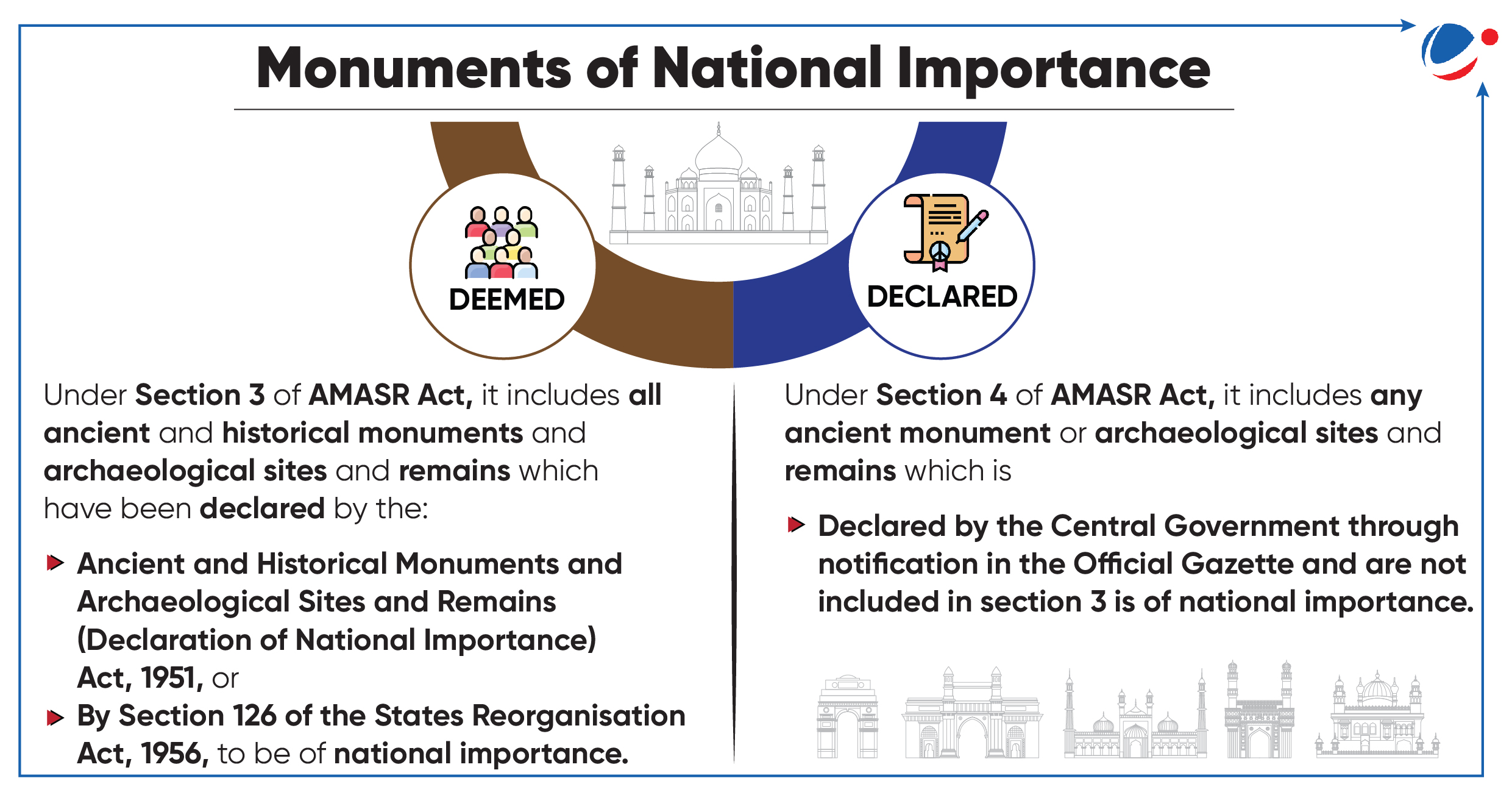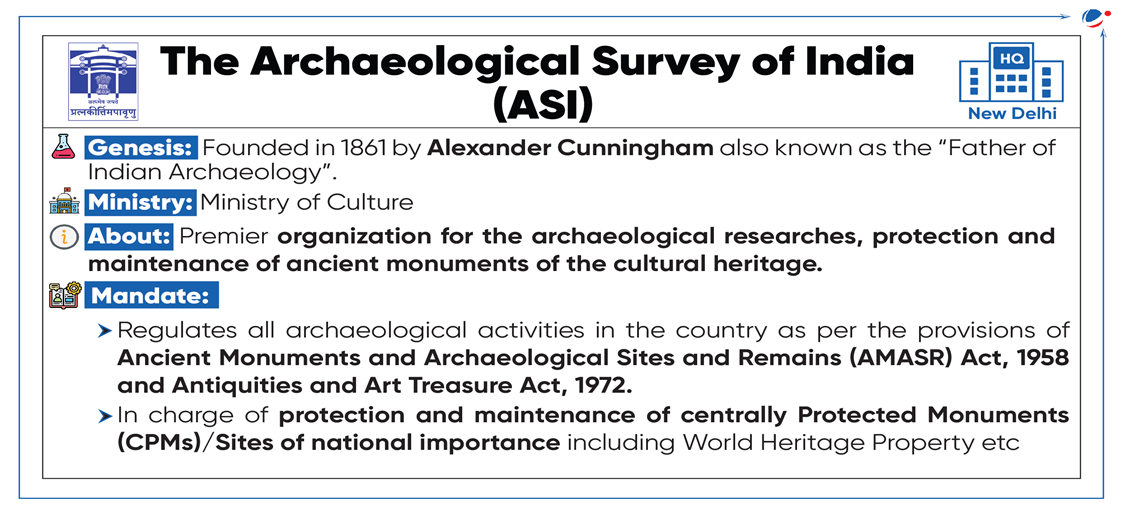Why in the News?
The Archaeological Survey of India (ASI) intends to delist 18 centrally protected monuments out of 24 "untraceable" monuments.
More about News
- These 18 monuments are part of an earlier list of monuments that the ASI had said were "untraceable" and it was assessed that they do not have national importance.
- Untraceable monuments were the protected monuments, under the ASI, whose exact location and condition could not be determined due to various factors, such as rapid urbanization, difficulties in tracing in remote locations, dense forests, etc.
- Among the monuments that face delisting now are a medieval highway milestone recorded as Kos Minar No.13 (Kos Mi) at Mujessar village in Haryana, Gunner Burkill's tomb in Jhansi district, the Telia Nala Buddhist ruins in Varanasi etc.
- The Kos-minars, erected during reign of Mughal Emperor Jahangir are the earliest known examples of the 'road milestones' in the Indian History.
- The kos-minar was built by Mughal emperor Akbar in A.D. 1575 for administrative convenience and also for the comfort of travellers.
- Decision was based on the report submitted to parliament by the Ministry of Culture titled "Issues relating to Untraceable Monuments and Protection of Monuments in India".
About "Delisting" of monument
- Delisting a monument means it will no longer receive conservation, protection, and maintenance from the ASI.
- Once a monument is delisted, regular construction and urbanization activities can take place in the area.

- It is done in accordance of Section 35 of The Ancient Monuments and Archaeological Sites and Remains (AMASR) Act, 1958.
- It empowers the Central Government to declare, whether an ancient and historical monument or archaeological site and remains have ceased to be of national importance.
- There is no term called "Missing Monuments" in the AMASR Act and the term only came into existence as it was used by the CAG Audit team on their Report.
- Article 49 of the Constitution directs the state to protect monuments and places and objects of national importance across the country
The Ancient Monuments and Archaeological Sites and Remains (AMASR) Act, 1958
|
Challenges in Protecting the Monuments
- Uniform Restrictions: The AMASR Act imposes uniform 100-meter prohibited and 200-meter regulated zones around monuments, regardless of their unique characteristics, leading to potential inadequacies in protection measures.
- Coverage Gaps: Smaller monuments not covered by national or state lists lack legal protection, making them vulnerable to development pressures and neglect.
- ASI's Limited Powers: To address encroachment and delay in publishing notifications, hindering effective monument protection.
- Lacks manpower: ASI faces staffing and budget constraints, impacting security measures and leaving monuments vulnerable to theft and vandalism.
- As per 2022 report of Ministry of Culture, only 248 of the 3693 protected monuments have guards.
Recommendations:
- Case-Specific Determination: Develop a framework for determining prohibited and regulated areas around monuments on a case-by-case basis to ensure tailored protection measures.
- Flexible Appointment Criteria: Review appointment restrictions for National Monuments Authority (NMA) to include experienced professionals from ASI or Ministry of Culture.
- Legal Coverage: Amend the Constitution to include "ancient and historical monuments other than those declared to be of national importance" in the Concurrent List.
- This will enable the central government to enforce provisions for the conservation of monuments and sites not covered by the Union List or State List.
- Empower ASI: It recommends ministry to prescribe a time-bound limit for ASI to publish the final notification.
- Also incorporate the provisions of encroachment under the Indian Forest Act, 1927 to deal with encroachment of monuments.





